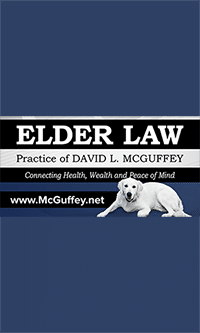In Knick v. Township of Scott, Mary Knick owned 90 acres of land in Scott Township, Pennsylvania. She lived in a family home on the property and used the rest of the property as grazing land for her horses and farm animals. There was a small graveyard on the property where her ancestors were allegedly buried. In December 2012, the Township passed an ordinance requiring that all cemeteries be kept open and accessible to the general public during daylight hours. In 2013, a Township officer issued a citation, notifying Knick she violated the ordinance by failing to open the cemetery to the public during the day. Knick filed suit alleging the ordinance amounted to a taking of her property. By the time the case reached the U.S. Supreme Court, it concerned a procedural rule, namely, whether Knick was required to seek compensation for the taking before she could bring a claim in federal court. The U.S. Supreme Court held that she could “because a taking without compensation violates the self-executing Fifth Amendment at the time of the taking, the property owner can bring a federal suit at that time.” Although the opinion provides less guidance than one might like or want, here are a few nuggets gleaned: (1) If a cemetery is on private property, non-owners have only those rights afforded under state property law at the time the cemetery was created; (2) any government attempt to expand those rights is likely a taking, requiring the government to pay compensation to the land owner; (3) since the land owner can seek compensation, there is likely no equitable remedy to bar the State from granting access to third parties. An ancillary principle is that, in the absence of State law granting access to third parties, if a non-owner enters private property without permission, the non-owner is likely trespassing and subject to State laws punishing trespassers. A contrary argument is made in a Brief of Cemetery Law Scholars as Amici Curiae filed in the Knick case.
The Georgia Department of Natural Resources published a paper titled Frequently Ask Questions: Cemeteries. It states that if a cemetery is not owned by your family and there is no public access, then you need the land owners permission to access it unless you are a descendant or heir of someone buried in the cemetery. It states:
“If you are a descendant or heir of someone buried in the cemetery, there is no specific statute that addresses right of entry to cemeteries on private property. However, case law in Georgia has been interpreted to mean that the heirs of those buried in the cemetery have an implied easement on the property. The easement gives the heirs the right to prevent disturbance to the graves and the right of ingress and egress for taking care of the burial plots. However, even descendants or heirs should ask the landowner for permission to come onto the property and discuss notification of intent to visit, the frequency of visitation, and passageway to be used.”
This thought, that an easement is implied, was expressed in Haslerig v. Watson, 205 Ga. 668 (1949), where the Georgia Supreme Court stated: “A cemetery is as public a place as a courthouse or market. It may not be frequented as much, but visits to it are as necessary and as certain, and the accommodation of the public requires a highway to it over which all must travel, so as to permit its dedication by public use.” By highway, we assume the Court meant an implied easement of some sort instead of a literal paved highway. The Court cited Hines v. State, 126 Tenn. 1 (1911) for the proposition that “although land containing the family burying ground is conveyed without any express reservation of this portion, there is an implied reservation; inasmuch as the graves are there to be seen, the purchaser is charged with notice of the fact that the particular lot has been dedicated to burial purposes.” With respect to visitation, one would likely argue there is an implied easement. If the argument concerns interment, then the argument is likely that dedication of the property as a cemetery creates an implied trust.
Other questions answered in the Department of Natural Resources paper include:
- What can I do about development encroaching on a cemetery?
- Moving graves?
- Using ground penetrating radar (GPR) to verify where graves exist
- Can I tell if it’s an Indian burial or a slave burial?
- What are the rock piles I’ve seen in Georgia?
- How do I record a cemetery?
- Where can I get money to fund my cemetery project?
- How do I clean up a cemetery and the tombstones?
- How do I research a cemetery or a specific cemetery-related topic?
- Can I get a historical marker for my cemetery?
- How do I register my cemetery in Georgia?




